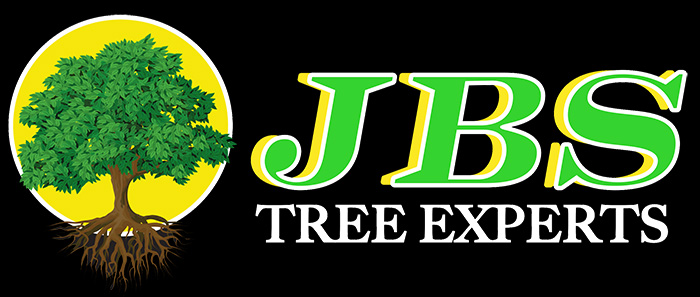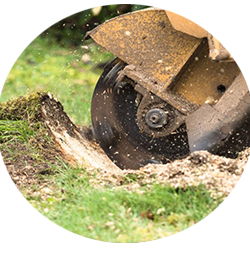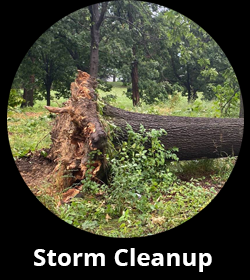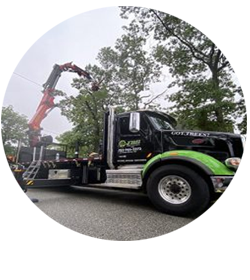TREE REMOVAL
Why take down a tree?
There are many reasons to take down a tree:
- The tree is dead.
- Alive, but hazardous to home or property or people.
- Uprooted, leaning over/toward house or car, unstable, storm damaged, etc.
- Dying by disease, insect infestation, or drought damaged.
- Lot clearing – at either residential or commercial building sites. This is the removal of multiple tagged trees in a particular area.
Q: How do we take down the tree?
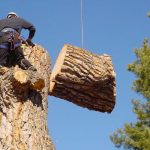
There are different ways to remove trees; it depends on the tree size, shape, reach, location and health status. Regardless of the method used, it is our goal to provide the safest, most effective tree removal process that offers the least impact to surrounding structures, vegetation, and land.
We most commonly remove trees through a climbing or aerial lift device, while using rigging & lowering devices. This allows us to keep the process a low impact removal process. However, when a tree’s location is precarious, enclosed, oddly angled or otherwise difficult to reach through standard methods, we also can utilize our Crane to ensure every tree is reachable. The crane eliminates a lot of the potential hazards that can present themselves in the removal process, especially when removing dead hazardous trees or those trees in tighter spots. It protects the climber, the crew, the surrounding people, and the property.
_______________________________________________________________________
TREE PRUNING
Tree Pruning is the most common tree maintenance procedure. Pruning is the removal of branches live or dead, trimming.
Q: Why is pruning necessary or good to consider?
Pruning is the removal of dead branches that populate the tree’s crown and inhibit new growth. These really should be removed because they weigh the tree down, making it unstable, the dead wood may break off and be hazardous to people or property when it falls. Deadwood in trees can reduce the tree’s life or can potentially become detrimental to the health of the tree, for instance deadwood invites infestation.
It may also involve the cutting/removal of live branches, that may be crossed or be crowding the crown of the tree. Pruning these live limbs and/or branches helps to promote growth in some species of trees. Conversely, pruning can be a process used to slow the growth in other kinds of trees. Pruning live branches can be done to reduce the weight of heavy limbs. It is another proactive safety measure, especially in preparation for winter. Ice can form and weigh down the trees. Proper, careful, and artistic trimming can reduce wind resistance. This is a good safeguard during wind and rainstorms when your trees must be able
to swing with the weather and not against it. Trimming increases light penetration, for those folks who pride themselves in a great lawn.
Therefore, pruning is both corrective and preventative. But for either reason we prune, it’s an aesthetic improvement. Like when we get a haircut. The property always gets a nice face-lift after a gingerly, artistically, and professionally completed pruning.
Q: When is the best time to prune?
All year round, really. Pruning can be done anytime of the year, especially if handled by someone who knows trees, species by species, and knows how to approach each one specifically. It really depends on results desired and the type of tree.
Fruit trees are best pruned in winter for instance, while non-fruit bearing trees can be pruned anytime. Think about early spring: just before time of rapid growth. Or just after flowering after spring. Fall is good too, after the heavy heat. Results: less stress on tree.
_______________________________________________________________________
STUMP GRINDING
Stump grinding is the most cost-effective way to remove the remaining tree stump below grade level. This is typically the last step in the process of a tree removal. Specifically, it is the use of a machine that has carbide teeth that are attached to a wheel that spins and grinds the wood of the stump into a pile of mulch. We can take this with us or leave it for you in a designated area of your property. Grinding a Stump takes proper training and experience to ensure minimal damage to your property. We are confident in saying that once we have removed a tree and the stump has been grinded, you cannot even tell that a tree was once there.
We grind stumps at the time of removal, or we can grind down preexisting stumps from trees previously removed.
Q: Why grind the stump?
Old stumps can be generally ugly. They decay, and can end up housing rodents and bees, and insects of all kinds, especially termites. If a stump is ground down with our stump grinder, it is easier to plant or build something else in its place. We can apply seed, so the “hole” in the lawn is replaced by grass.
_______________________________________________________________________
Hedge Trimming/Removal
Snip those overgrown branches from your bushes back with our hedge trimming services. Trimming your hedges can create a natural, immaculate feature for your home or business. Don’t let your excessive hedges take away from the rest of your beautiful outdoor space. Hedge trimming can take your yard to the next level paired with our other services!
Q: Why prune your hedges?
The intention behind pruning hedges is to prevent dead or dying branches from harming neighboring plants and people. By removing these branches, you allow the hedge’s flowers or fruits to blossom. Unlike maintenance trimming, pruning isn’t done to slow down the growth of the hedge, but to actually stimulate it.
Q: When is the best time to trim and prune your hedges?
Since time immemorial, people have been concerned with the health of their plants.
Pruning and trimming are common tactics utilized to maintain and care for gardens. As both processes are regularly used on the farm, it is essential to know when to trim hedges and prune at the best time.
To better understand the necessity of the two methods, below is the definition of what each term stands for. As well, there are varying factors that differentiate between trimming and pruning.
Most people use these two terms interchangeably to refer to the other, which is wrong.
In gardening, pruning and trimming refer to two different techniques that use varying equipment.
Defining Pruning and Trimming?
Pruning involves the strategic removal of branches and stems that display undesirable properties in a plant. One of the main reasons why people prune vegetation is to enhance farm safety.
A key aspect you should be familiar with when it comes to pruning is pollarding. It occurs when one gets rid of the topmost branches to promote the vigorous lateral growth of units. You use pollarding when you want to have dense foliage.
When you remove infected, loose, and dead branches, you prevent harm and injury to other plants or people. When it gets windy, you are protected from loosely attached twigs and falling debris.
Pruning creates a chain effect resulting in healthier plants as new growth is encouraged.
An un-pruned hedge is a preferred habitat for pests and animals. Critters and creatures of all kinds prefer overgrown vegetation as it provides more cover and food. Regular pruning deters pest infestation and destruction of the plants.
Pruning is also used for aesthetic purposes. Some people prefer having rounded tops, while others will go the extra mile to create fancy and playful figures depending on their preferences and tastes.
In this case, pruning helps one achieve the desired shape to enhance the plant aesthetically. Geometrical figures and animal forms are some popular shapes you will see carved out of bushes and trees.
Trimming, on the other hand, applies to the clipping of the tips of twigs and branches to improve the aesthetic appeal of the hedge.
It involves skimming the tops and sides to create a manicured, clean look. Experts recommend learning when to trim hedges to avoid damaging your beautiful plant life.
The practice of trimming hedges, trees, and bushes to achieve a desired aesthetic effect is both art and a science. It is popularly referred to as the topiary.
Topiary is the horticultural practice of training plants to maintain an ornamental shape. These artificial, decorative shapes are achieved through clipping of the twigs and foliage.
The biggest perk of trimming is that it curbs overgrowth. When you regularly maintain your hedges, you control its growth within the garden. You are in control of the appearance of your hedges. You decide how to trim and the shape you prefer. Beautifully trimmed hedges improve not only the beauty of your exterior but also increases the value of the property.
_______________________________________________________________________
Lot/Land Clearing
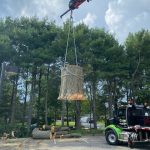
With our state-of-the-art equipment, we offer different methods of land clearing designed to save you money on your projects.
Whether it’s new construction, renovations, or clearing for gardens, our team of experienced woodsmen work efficiently, giving us the ability to always keep a competitive edge.
We work with many builders, developers, and contractors in the Monmouth & Ocean County areas and have garnered a reputation for excellent workmanship, fast turn-around time, and competitive pricing.
_______________________________________________________________________
Crane Services/Rental
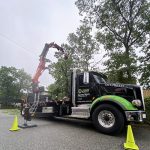
The simple solution to for the complex demands of each tree removal project. It is hands down the best way to get it done.
Need to move something that is practically not reachable?
We offer a top-quality Crane along with a Licensed Operator to reach over and/or around most things to get your job done. Our Knuckle Boom Crane can be transported to your location and offers a maximum lifting capacity of 32,190 lbs and a Maximum Hydraulic Outreach of 68’ 11”.
Emergency Storm Clean-up
Every now and then, our area is touched by extreme weather. We are available to you during those times, 24/7.
The aftermath of such weather usually includes fallen trees, and sometimes lots of them. Fallen trees can cause dangerous roadway obstructions, structural damage and can even prevent you from safely exiting your driveway.
That is why it is important to know what we supply highly skilled climbers to manage their removal safely. Trees often lay in precarious positions, tangled in other trees or structures, and prone to unexpected shifting. Selecting the right tree service to assist you after a storm is a serious decision.
It would be great if Mother Nature never caused destruction, but realistically, we need to be prepared for the next time she does. If your property does suffer storm damage in the future, rest assured in knowing that we are only a phone call away!
